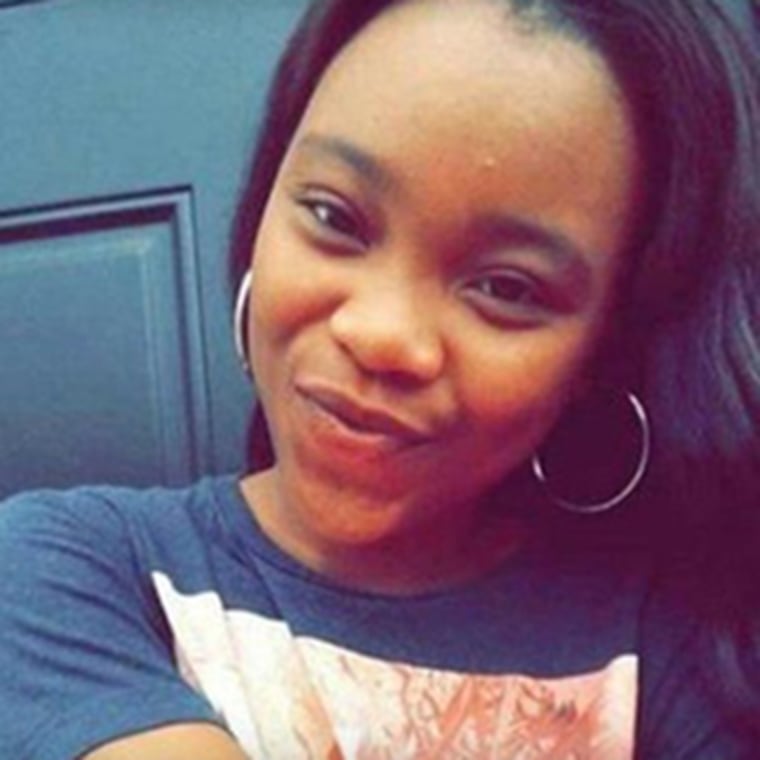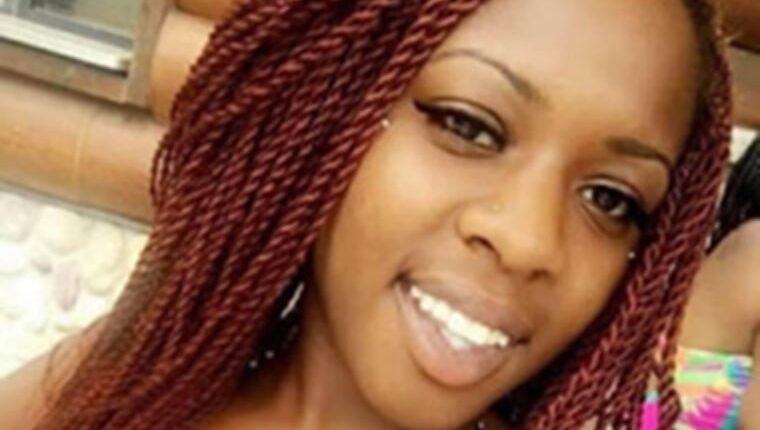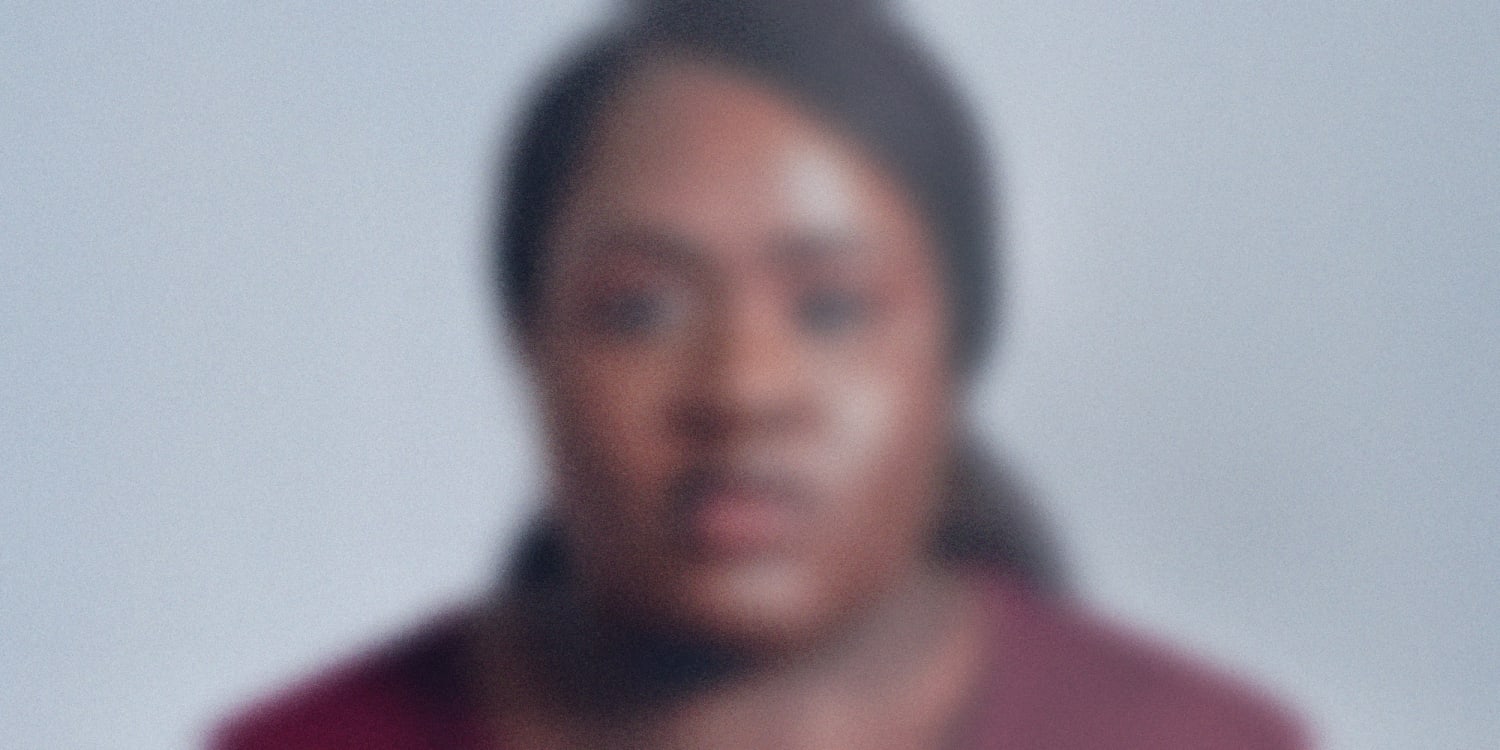The night Nakyla Williams vanished on Nov. 9, 2021, security cameras near her mother’s Indianapolis home captured her getting into a gray pickup truck. She never returned home.
Williams would be 26 now, and her disappearance has been immensely traumatic for her family, who have pushed for more media coverage of her case. Her cousin, Barry Stewart, said she believes Williams has been forgotten because she is a Black woman.
“It’s causing anxiety, depression, fear,” Stewart said of her cousin’s disappearance. “A lot of the relationships in the family have broken up and fallen apart during this time, just due to the stress and the loss — the worry.”
Black people like Williams accounted for 39% of missing people in 2022, according to the Black and Missing Foundation, a Maryland-based nonprofit group that works to bring awareness to missing people of color. More than 30,000 Black people in the U.S. remained missing at the end of 2022, according to the most recent data from the National Crime Information Center. Half of those cases were missing Black women and girls.
After authorities cast doubt on a claim that Carlee Russell, an Alabama woman who had briefly gone missing last week, online vitriol and critical commentary poured in through social media.
Police said they could not verify Russell’s account of having been abducted, and cited that she had recently searched online about paying for Amber Alerts and the movie “Taken.” Russell’s parents had no comment about the police comments, but said Tuesday on NBC’s “TODAY” show that their daughter had been abducted. Still, advocates and experts say her story should not diminish the reality that tens of thousands of Black people go missing each year in cases that rarely make national headlines or receive meaningful investigations from law enforcement.
“I would never apologize for believing a Black girl given what we know about what happens to missing Black girls and women,” said Treva Lindsey, a professor of women’s, gender, and sexuality studies at Ohio State University. “Our job is to believe first, and put the energy and resources behind it and then see what happens.”

Lindsey said that although Russell’s case may not be what people initially thought it was, she was encouraged by the collective care extended to her.
“That’s one of the first times I’ve seen that kind of groundswell around a missing Black girl, a woman, in quite some time,” she added. “Every missing person deserves that kind of investment.”
One such person is Williams. Stewart, her cousin, suspects that her disappearance is related to her opioid use, and potentially being manipulated by a friend who she thinks gave her pills laced with fentanyl (police said they wanted to talk to that person, but he has not been named as a suspect).
“The opioid crisis is real. It’s real all over the country, especially here in Indiana,” Stewart said. She also said that when laced opioids affect individuals in white communities, it’s labeled as a crisis, but when “there’s a Black person, they discard us and write us off as having a drug problem. And that’s what we need to change.”
Lt. Shane Foley of the Indianapolis Metropolitan Police Department told NBC News there were no updates on Williams’ case as of Friday afternoon.
Given the disproportionate data that missing Black women are often ignored, the virality of Russell’s case is uncommon, Lindsey said. “We have to prove to people that we’re worthy of empathy, worthy of care, worthy of protection, worthy of being believed,” she said.
She cited misogynoir, a concept that refers to the simultaneous misogyny and racism Black women uniquely face, as a factor explaining why their cases have historically been downplayed.
While “there is a growing investment from folks around missing Black girls and women,” Lindsey added, “I still think we have a racial empathy gap. Watching the aftermath of her being found suggests to me that we still have this kind of criminalizing, skeptical, cynical and ambivalent impulse around stories of Black women and girls who go missing.”
The journalist Gwen Ifill coined the term “missing white woman syndrome” in 2004 to describe the disparity. Black men accounted for just over 15,500 missing people at the end of 2022, disappearing at similar rates as Black women. Black children — who accounted for tens of thousands of lost people in 2022 — go missing at higher rates than white children, according to the National Crime Information Center.
Before investigators publicly questioned Russell’s account, some commenters on gossip sites such as The Shade Room and Hollywood Unlocked, and others, speculated that the Alabama woman was “lying” after she was reported being home and safe.
Her case became “clickbait on one hand,” Lindsey said, “but it also is a familiar narrative of distrust that is largely baked into our culture broadly.”
Toni Jacobs said that the police doubted her concern when her daughter Keeshae Jacobs went missing in 2016. She was last seen leaving her apartment building in Richmond, Virginia.

“I had to prove that she was missing. I shouldn’t have had to argue with them. They told me, ‘Well maybe she just don’t feel like being bothered,’” Jacobs continued. “I told them she calls me every day, talks to me all day long so that’s not something she would normally do.”
Her daughter, who would be 27 now, still has not been found. Richmond police did not immediately respond to a request for comment.
Keeshae Jacobs is among the many people listed in the database of the Black and Missing Foundation, which has reunited hundreds of missing people with their families.
“There are people out here who are looking for their missing loved ones,” said Natalie Wilson, the organization’s co-founder. “So, I ask people before you close your heart, go to our website, read stories about the staggering number of missing people of color. And you don’t know their names because they don’t make the national headlines.”
Advocates like Wilson have long pointed out that police resources and media attention usually focus more on missing white women than missing people of color.
“Our focus is to make sure that this one case does not set a precedent for all missing persons of color cases,” said Wilson. “Because we cannot afford to let one incident derail our progress over the last 15 years, because we have been advocates for families who are desperately searching for their missing loved ones.”
Wilson highlighted the case of Tamika Huston, 24, who vanished in May 2004. While Huston’s case was under the public’s radar, it was brought to Wilson’s attention by one of Wilson’s family members living in Spartanburg, South Carolina, where Huston is from. Huston’s aunt contacted news outlets to cover her niece’s story but was met with silence, Wilson said.
Shortly after, Wilson read headline after headline publicizing the disappearance of Natalee Holloway, an 18-year-old white woman who went missing in 2005, and Jennifer Wilbanks, another white woman who disappeared just days before her wedding that same year. Huston’s case came to a close in August 2005 when her ex-boyfriend, Christopher Hampton, led authorities to her remains. Hampton pleaded guilty to killing Huston in 2006 and was sentenced to life in prison without parole.
Wilson said people cannot let the details surrounding Russell’s case “derail us” from the task of finding Black people who go missing, and reducing the number of disappearances in the first place.
“We can never give up in spreading awareness and searching for those missing individuals, because they are our mothers, our fathers, sisters, brothers — valuable members of our community,” Wilson said. “And we can no longer turn a blind eye to the issue. We have to tackle it head on.”
Source: | This article originally belongs to Nbcnews.com









